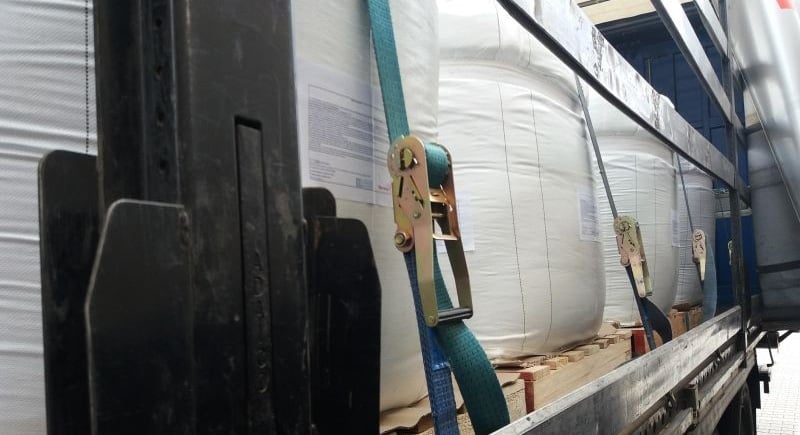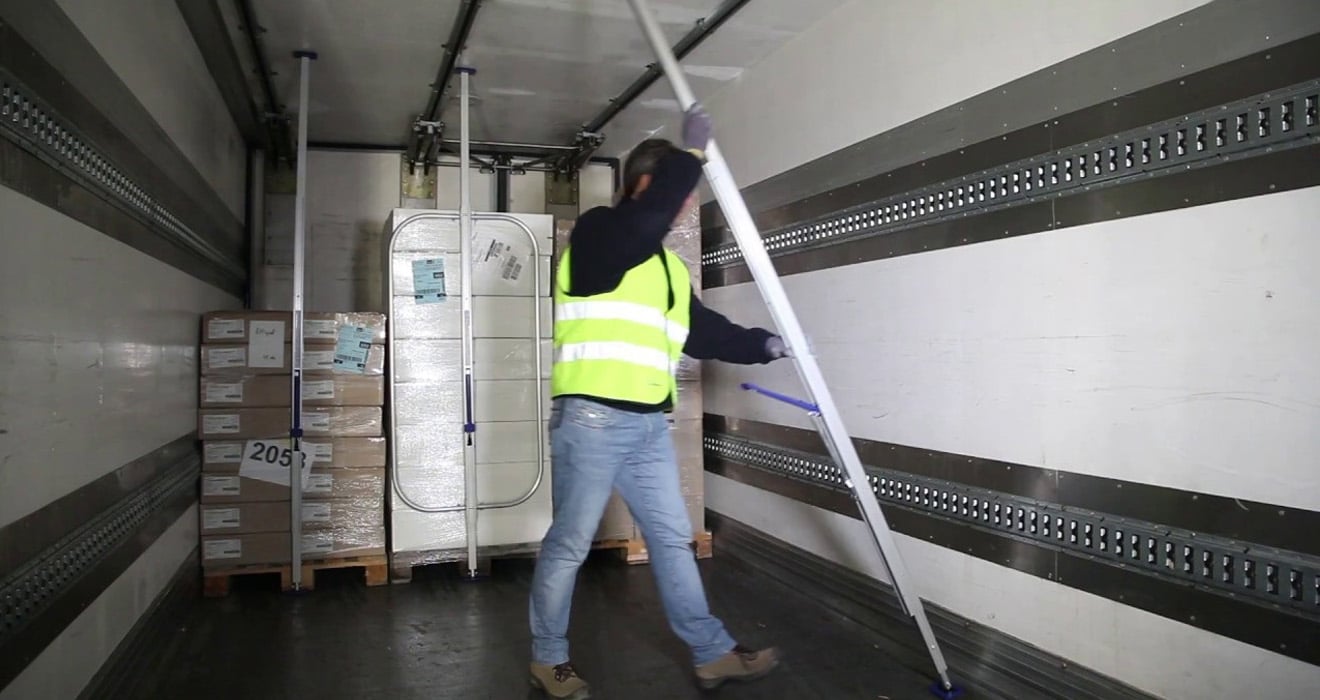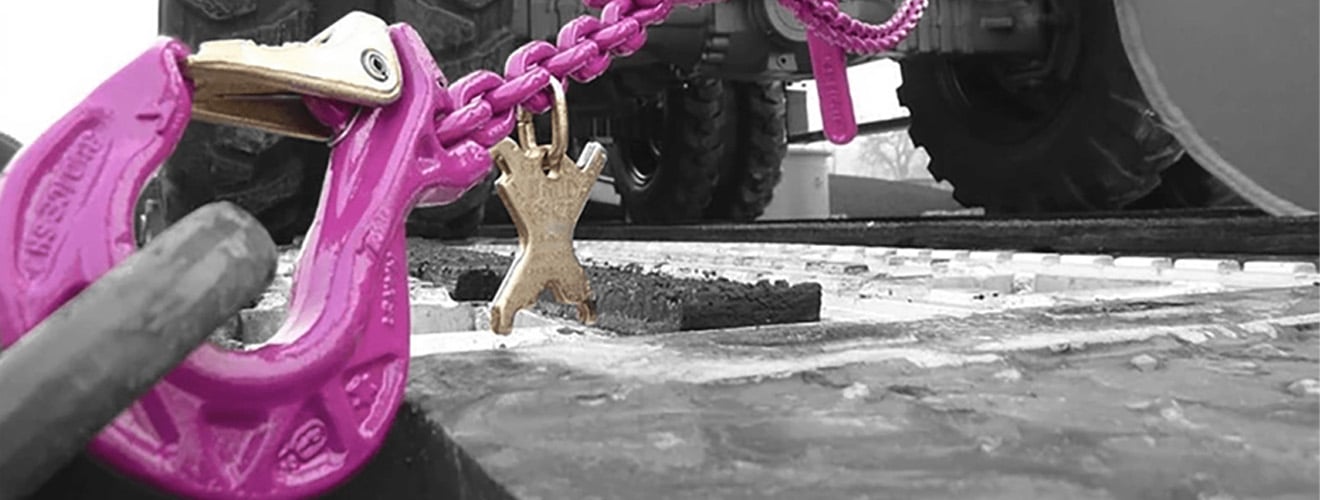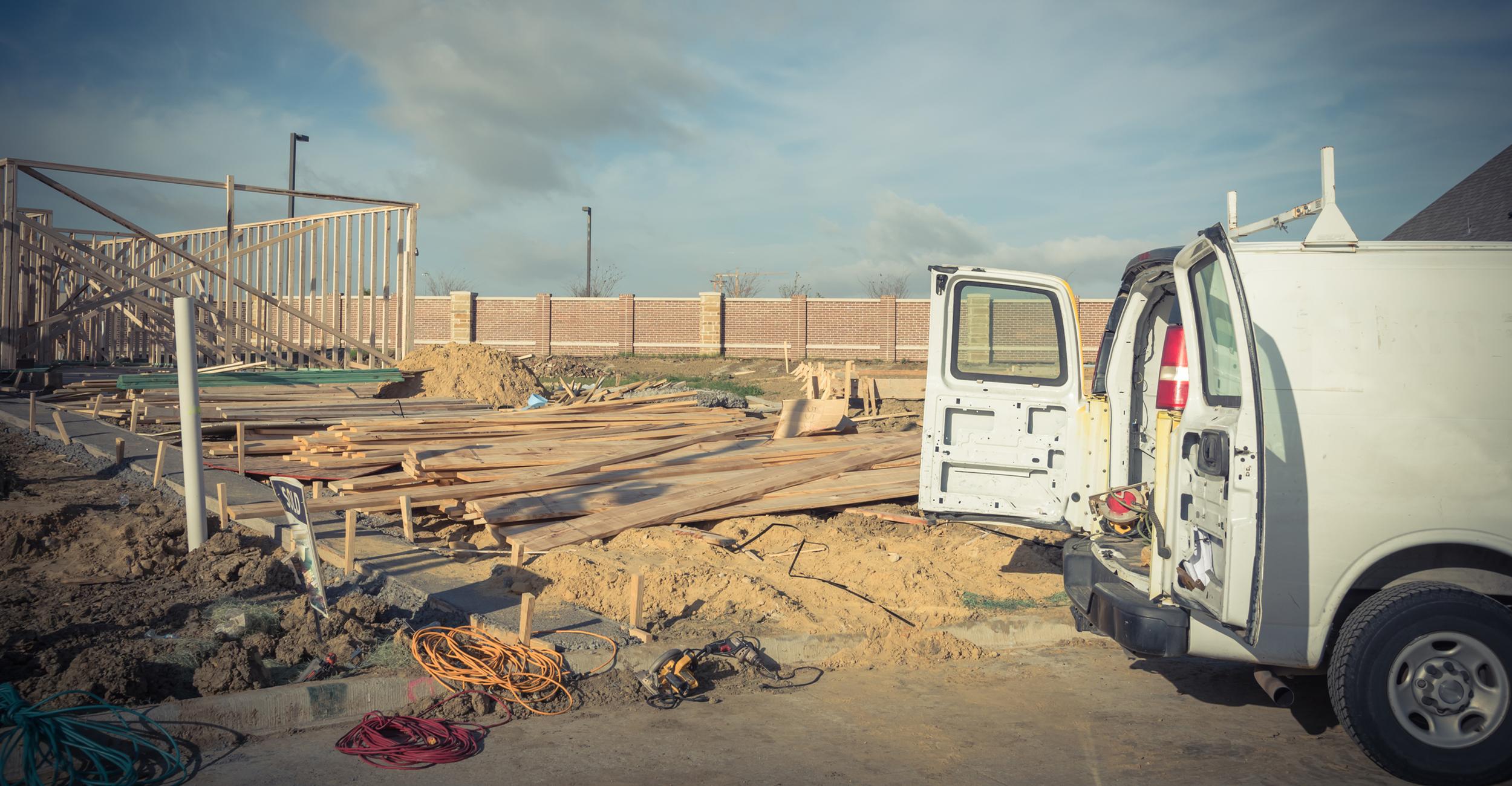
What exactly is a big bag?
In order to be able to answer the question as to the best way to secure big bags, let me start by explaining exactly what a big bag is. A big bag is a bag which is used for storing or transporting relatively small quantities of bulk goods such as sand, gravel, grain, stone and waste. They come in a wide range of sizes but the big bags most commonly used are the ones which have a capacity of between 500 and 2000 litres. The height of a filled bag is usually 1 to 2 metres. A big bag is usually made of woven PP plastic and has loops at the top which can be used to lift the bag. A big bag will often be placed on a pallet. If the bag is bigger than the pallet, it can lead to problems when it comes to securing the load. Therefore as a carrier, you should not accept this.
A big bag is a flexible loading unit
A big bag is extremely unstable. It is simply a large, flexible bag. When you fill the bag, it often forms a cone shape but during transportation, that shape can change. During transportation, the big bag will be subjected to vibrations which can cause the contents of the bag to stabilise and/or settle even more. Because of the wide range of goods that can be transported in a big bag, this can have a major bearing on the correct method to use for securing the load. This is often underestimated in practice. In order to increase stability, you can use a so-called vibrating table when filling bags. It is also wise to leave the filled bags for at least 24 hours before loading.
Standard means and methods for securing loads
Big bags are often transported in an EN 12642 Code XL superstructure. Although securing by means of form-fitting is thought to be sufficient for transporting bags safely, that is not always the case. There are conditions that need to be met when using form-fitting. For instance, empty spaces will need to be filled. In addition, the content of every big bag is different which means that they have to be treated individually when it comes to securing. Consequently, I believe that every filled big bag should be dynamically tested. For not every load securing method is sufficient for every big bag. The weight is usually known but what you don’t know is how the load in the bag will behave. As a rule, big bags are not even mentioned on certificates. Therefore individual tests will need to be carried out. If securing by means of form-fitting is possible but the required securing force is not sufficient, you will therefore need to take additional measures in order to secure the bags correctly.
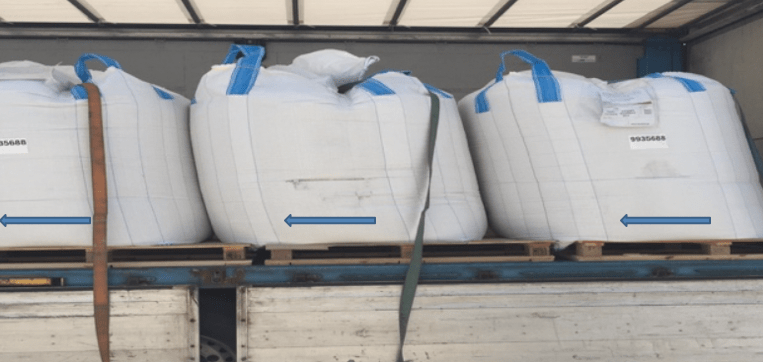
Securing big bags using the superstructure
You can use your superstructure when securing big bags. It should preferably be an XL-certified superstructure in the proper technical state. Try to place the bags as close together as possible and fill the spaces in-between with dunnage bags or pallets. You should use the side panels too. Make sure to position the shoring bars and the blocking bars at the correct height so that the big bag does not hang over the bar. You should also use lashing straps with a high preload force. Tighten the lashing straps, slacken them off again and then tighten them again. Because you only have limited space for securing, it can prove useful to use side bars with integrated securing rings. Finally, you should also use non-slip material which will stop the bags from moving as much. Note that big bags which tip over on a bend against the side wall will remain stuck there. You will then be wider than 2.55 metres which is not permitted. In addition, the distribution of the load will change.
Tying down
Test centres have carried out various dynamic road tests with big bags tied down. These included experimenting by placing a pallet on top of the bag and then tying down the load. Unfortunately, this did not have the desired effect. Nor did tying down without the pallet because the downward pressure created (as a result of the preload initiated) in the contents of the big bag drops. The vibrations which occur in transit cause everything to settle even more which results in a loss of preload force. If this load securing method is used, the driver will have to carry out retightening and checking even more frequently. As far as this is concerned, it can help a bit if you tighten the lashing straps, slacken them off and then tighten them again. The straps will then cut deeper into the contents so that you keep the straps under more tension. However, this only works with certain products. So how the contents of a big bag will behave during transportation plays a major role when determining the right way to secure your load.
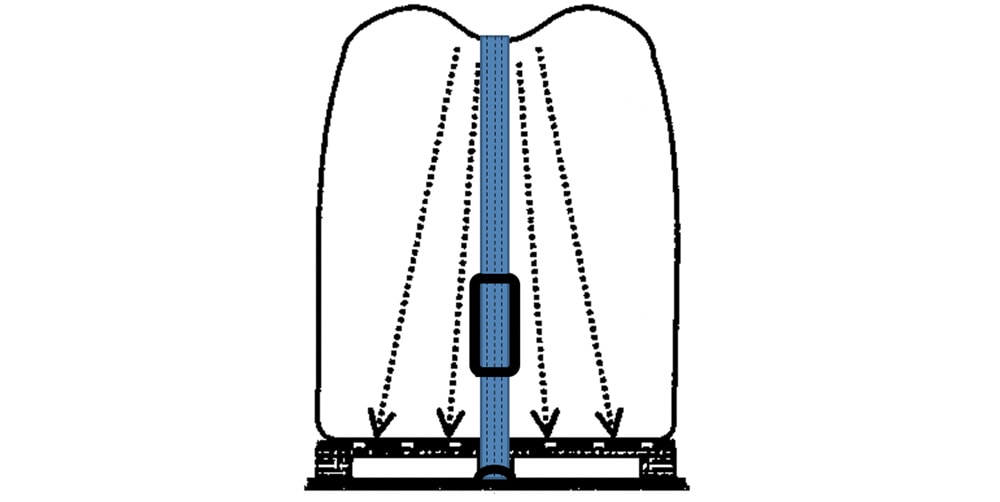
Diagonal lashing
Diagonal lashing as a load securing method only works with certain products. A combination of tying down and top lashing may be used. A crossed lashing can only be used if it has been tested and certified.
Bundling of big bags
Then we still have the possibility of bundling four big bags together to form a single unit using a lashing strap and top lashing it at the front and rear. This can be done by feeding the lashing strap through the loops on the bags. It takes longer but, in my opinion, it is a load securing method that can work well.
Always choose the most rigid big bag possible. Bags with a layer of non-slip material on the underside also became available recently.

Specialised systems
There are also specialised systems which can render an EN 12642 Code XL superstructure superfluous. These effective methods can only be used if they are tested first. Without testing, it is virtually impossible to comply with any directive, standard or law. However, more and more new curtainsider trailers which are suitable for big bags are coming onto the market.
But a lot of transport companies work with more than one customer which means that they are given various types of load to transport. Because of this, a driver will be given standard securing solutions rather than ones that are product-specific.
So there are other possible solutions but sometimes they are so labour-intensive because they involve a lot of climbing. That can have a detrimental effect on occupational safety too.
New german directive VDI 2700 sheet 18
In Germany, an attempt was made to produce a directive relating to this:
Sheet 18, Securing loads on road vehicles – Securing bulk materials in flexible packaging.
However, this directive has already been repealed and is in the process of being rewritten which shows the complexity of this type of regulation. The revised version is expected to be published by mid-2021. In any case, it is clear that there will not be a calculation method for big bags. Just form-fitting and more form-fitting!
Conclusion; the right way to secure big bags
There are so many factors to be taken into account when determining the correct method for securing big bags that it is difficult to make a proper assessment. Only by carrying out dynamic tests on the loaded bags can you objectively establish the best load securing method to use.
Ultimately, only the shipper can determine the best load securing method to use. If he is any good, he will know his product well enough to be able to determine and prescribe the correct method for securing loads. Neither the driver nor the inspector en route can make a factually correct assessment of the situation.

